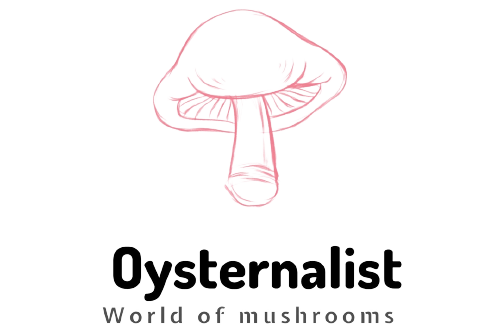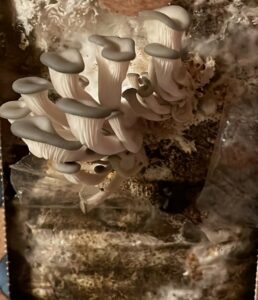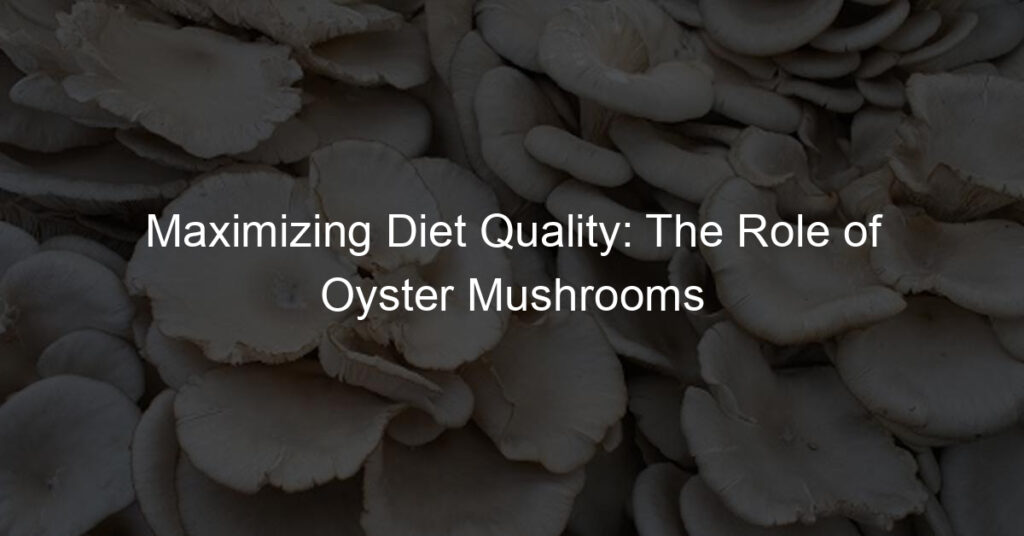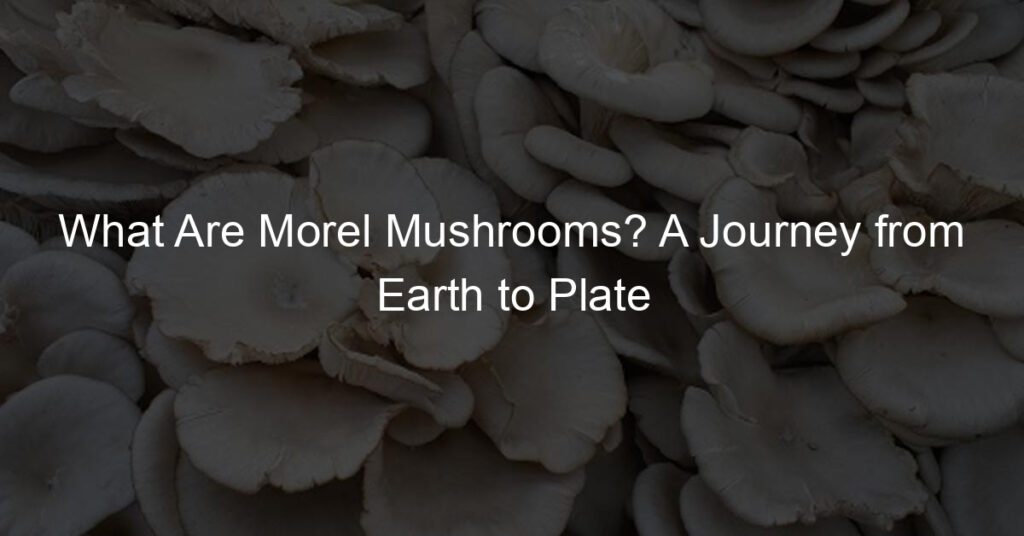When it comes to mushrooms, there are a lot of different types that you can choose from. Two of the most popular mushrooms are oyster and shiitake mushrooms. While they may look similar, these two types of mushrooms have quite a few differences. Let’s take a closer look at the essential differences between oyster mushrooms and shiitake mushrooms.
So, What’s the Difference Between Oyster Mushrooms and Shiitake Mushrooms?
Oyster mushrooms (also called oyster or brown oyster mushrooms) and shiitake mushrooms are two popular types of mushrooms that are used in many different cuisines. While they have some similarities, there are also some notable differences between these two types of mushrooms.
Both types have a distinct flavor, as well as many other similarities. As with most other types of mushrooms, they grow in clusters on the ground—not in trees. They’re commonly found in damp woodland settings but may grow in gardens if conditions are right.
An oyster mushroom is a coarse-leaved species that grows in damp locations, often near water. It has a white to brown cap and stem, and its flesh is typically white. Oyster mushrooms are used to add an umami taste to dishes and foods such as sauces, stocks, soups, gravies, and stews.
The shiitake is a flavorful mushroom that has a more robust stem that can grow up to 20 inches long, it has a conical cap that becomes broader at the top, and its gills run down the stem instead of along it like those of oyster mushrooms. Shitake’s intense mushroom flavor is perfect for stir-fries, rice, and noodle dishes.
Oysters have a delicate flavor while shiitakes have an earthy and woody flavor.
Both are wild mushrooms, but oyster mushrooms are now also commercially cultivated on a small scale. Shiitake mushrooms have been commercially cultivated in East Asia for centuries and only became widely available in the West in the 20th century.
What Are Oyster Mushrooms?
Oyster mushrooms are as versatile as they are delicious. They can be added to a variety of dishes including soups, sauces, and stews, or they may be sautéed with other ingredients like garlic.
They’re also the perfect mushroom for grilling—just brush them with olive oil and grill them to perfection. An oyster mushroom is very popular because it adds an extensive umami taste in addition to its meaty texture, flexibility, and shelf life.
Oyster mushrooms grow in clusters on the ground in damp woodland settings but may also grow in gardens if conditions are right. They have a white to brown cap and stem, and their flesh is typically white.
What Are Shiitake Mushrooms?
Shiitake mushrooms have a more robust stem than oyster mushrooms, which can grow up to 20 inches long. It has a conical cap with a broad top, and its gills run down the stem instead of along it like those of oyster mushrooms.
Fresh shiitake mushrooms have a light tan to dark brown cap and a white to the tan stem. When dried, the caps become darker brown and the stems turn pale tan to cream-colored. The flesh of both fresh and dried shiitake mushrooms is white with a slightly spongy texture.
Shiitake considered a more intense mushroom is commonly used in Asian dishes such as fried rice, soup, stir-fry, and noodle dough. They’re especially good for adding an umami taste to a dish or food because they contain more of the amino acids glutamate and glutamic acid.
How Do Oyster Mushrooms and Shiitake Mushrooms Differ in Taste?
Shiitake mushrooms have a more robust stem and grow at the top of the stem. In addition, they have thinner gills that run down the stem while oyster mushrooms have thicker gills that run along the stem.
Shiitake mushrooms also typically have a more intense flavor than oyster mushrooms because they’re grown in lower temperatures and higher humidity. In terms of appearance, shiitakes are distinguished by their conical shape and dark brown to black stems. They also usually have a sooty coating on their caps which gives them an almost black color.
What Are Some Essential Differences Between Oyster Mushrooms and Shiitake Mushrooms?
- Oyster mushrooms have a white to brown cap and stem, while shiitake mushrooms have a conical cap that becomes broader at the top.
- The stem of an oyster mushroom can grow up to 20 inches long, while the shiitake mushroom has a more robust stem that can grow up to 20 inches long.
- Oyster mushrooms are found in damp woodland settings but may grow in gardens if conditions are right. Shiitake mushrooms are commonly found in damp woodland settings but may grow in gardens if conditions are right.
- Shiitake mushrooms have gills running down their stem instead of along them like those of oyster mushrooms.
- Shiitake mushrooms typically have a more intense and earthy flavor than oyster mushrooms because they’re grown in lower temperatures and higher humidity.
Which Type of Mushroom Is Better for You?
If you’re looking for a mushroom that has a unique flavor, oyster mushrooms may be your best choice. They have a more robust stem and they grow in damp locations near water.
In terms of dietary fiber and protein content, both oyster mushrooms and shiitake mushrooms are good sources. However, oyster mushrooms contain more vitamin C than shiitake mushrooms.
However, shiitake mushrooms are firmer and have thinner stems than oyster mushrooms. Their gills run down the stem instead of along it like those of oyster mushrooms. As far as texture goes, both types are fairly firm but their caps can vary from firm to soft depending on how old the mushroom is.
Some people say that shiitakes are more flavorful than oyster mushrooms because of the way they grow on logs. Although this is true, you should still consider other factors when deciding which type of mushroom to use in your dishes or food products such as cooking time and ease of handling during preparation.
What mushroom is similar to oyster mushrooms?
The shiitake mushroom is similar to oyster mushrooms in that they’re both types of mushrooms that grow in clusters on the ground. They can also be found growing in damp woodland settings and are typically white, but they have different flesh colors.
How Can You Use Oyster Mushrooms and Shiitake Mushrooms in Cooking?
Oyster mushrooms with their mild flavor are typically used in sauces, stocks, soups, gravies, and stews to add an umami taste. They’re also a common ingredient in Asian cooking.
With their almost woody flavor, Shiitake mushrooms are more commonly used in Asian cuisines like Japanese and Chinese dishes. They’re usually ground into a paste to use as a condiment or flavoring for stir-fries or noodle dishes.
The shiitake mushroom is usually ground up into a paste when you need it for stir-fries or noodle dishes. It can also be dried and rehydrated for later use. Both types of mushrooms have thin stems that can easily be sliced into thin strips to use as wrappers for sushi rolls.
The cap can also be sliced into thin strips and used to wrap around other ingredients such as tofu cubes, vegetables, or fish fillets. Shiitakes are often used as the main ingredient in an omelet filling, while oysters may be mixed with other vegetables such as tomatoes or onions.
Other species like porcini mushrooms or king oyster mushrooms with their somewhat delicate texture and hints of meaty flavor, may be used as a meat substitute in vegetarian dishes. No matter which type of mushroom you choose, make sure to cook them properly to avoid any foodborne illness.
Final words
Both mushrooms are popular in cooking, but each one is different in its flavor and texture. Depending on your dish, you may want to use one type of mushroom over the other.
Consider other factors such as cooking time and ease of handling during preparation when deciding which type of mushroom to use in your dishes or food products.









